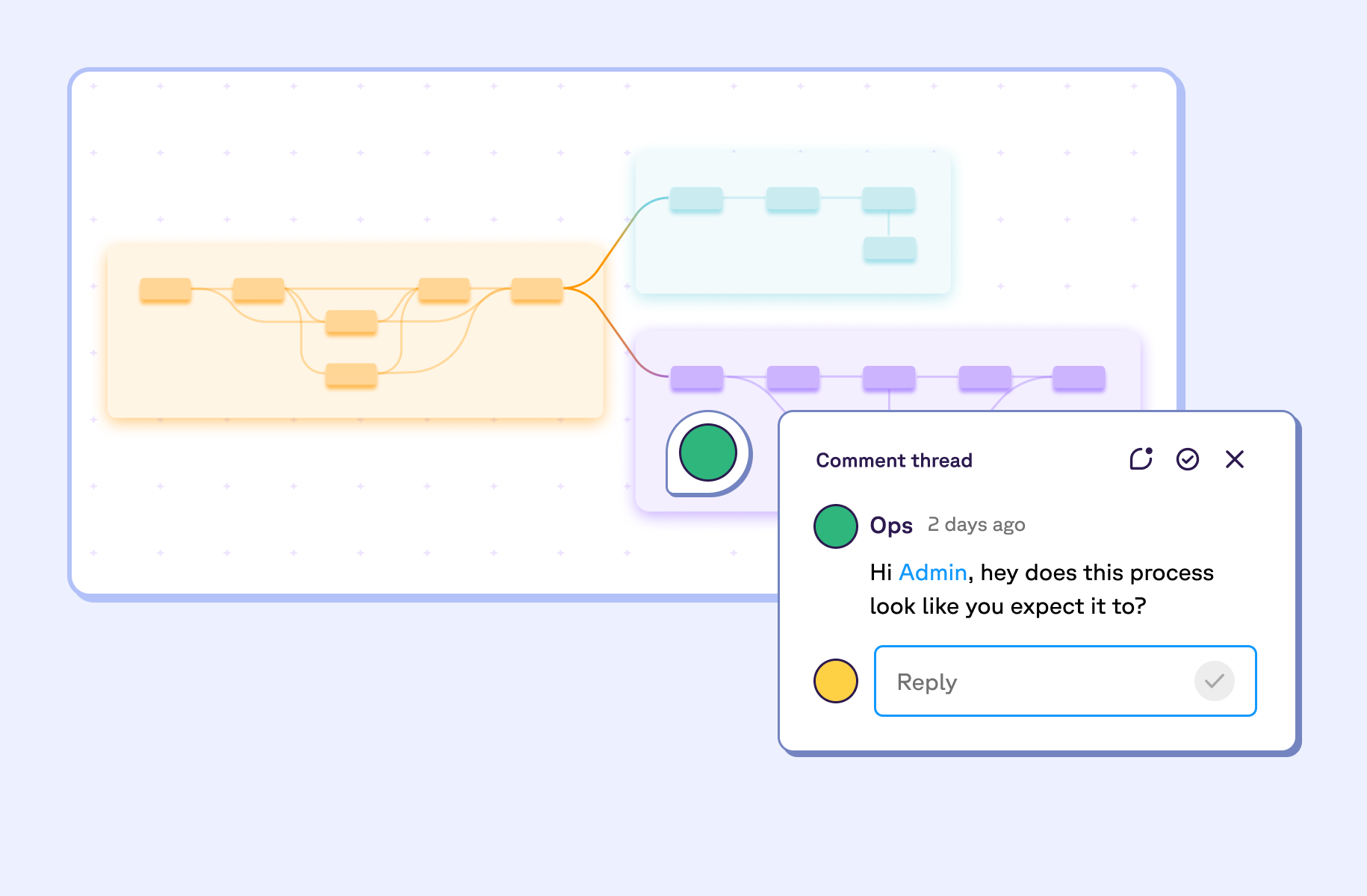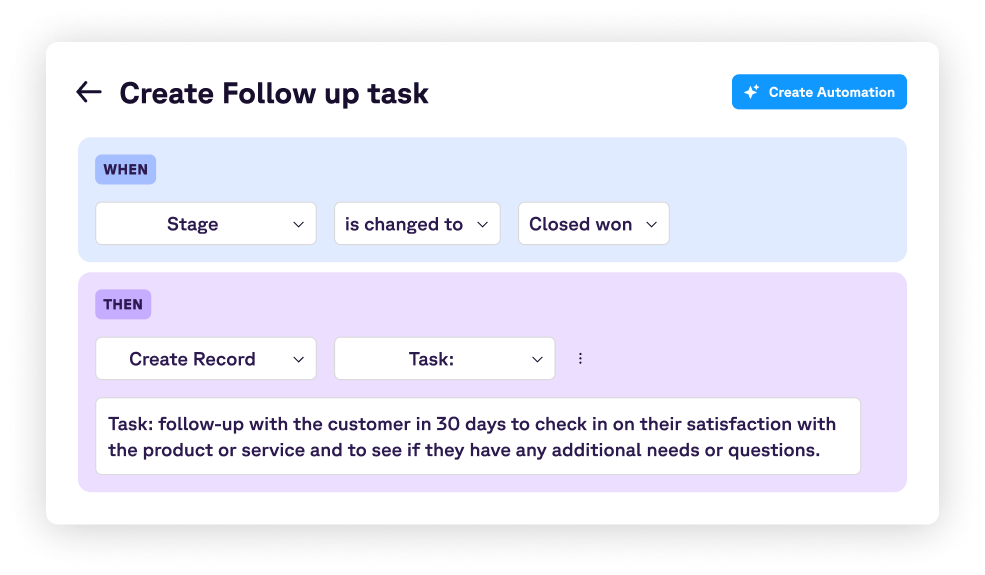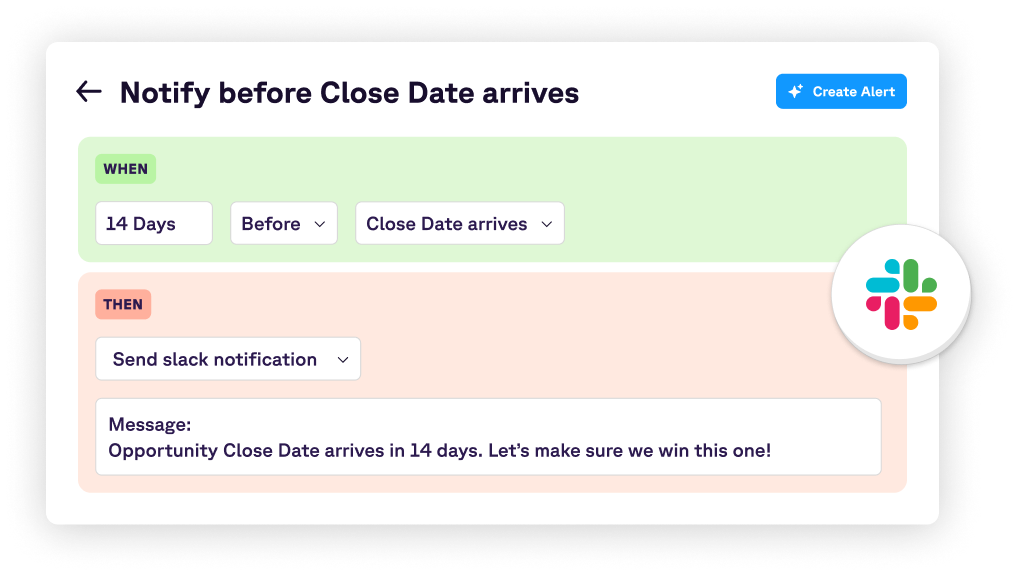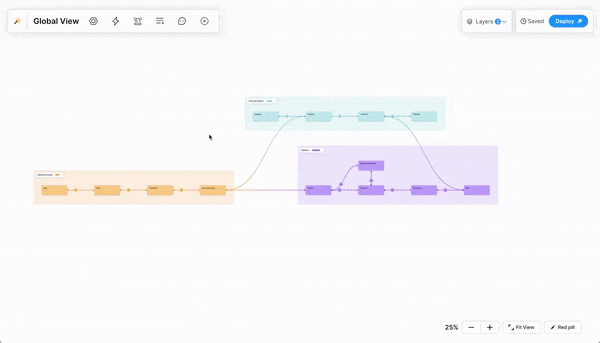
Automation is nothing short of a requirement to combat revenue leakage in modern business processes. Relying on repetitive manual tasks being completed correctly, at scale, is when we see data becoming unreliable and revenue slipping through the cracks. Whether it's creating a Renewal Opportunity after a successful deal or receiving alerts about important signals from Contacts, having your systems handle these tasks automatically can save you a lot of time and effort. Salesforce is a highly powerful platform that offers a multitude of ways to create automations:
- Workflow Rules and Process Builder - Workflow Rules offer basic functionality and were introduced in earlier versions of Salesforce, while Process Builder is more advanced and capable of automating complex processes with multiple steps and dependencies. However, both tools are scheduled to be phased out soon.
- Salesforce flows - the recommended Automation tool in Salesforce. Flows provide a visual interface where users can drag and drop elements to create a flow of actions, decisions, and data collection. Flow is extremely flexible and provides filter-based criteria, the ability to "loop" the same action through many records meeting the same criteria alongside other complex actions. Salesforce also recently launched "Flow Orchestration" which enables admins to define the order in which flows run as well as execute multi-step processes that chain together multiple flows.
- Apex Code - Creating automations in Salesforce using Apex code is a powerful way to extend and customize the platform's functionality beyond what is possible with point-and-click tools. With Apex, developers can create custom triggers, classes, and processes that execute when certain conditions are met or when specific user actions occur. This level of control allows for more complex and tailored automation solutions to be implemented within Salesforce.
However, it's important to note that creating automations in Salesforce is not a simple task. Due to their complexity and the need to understand the underlying logic, the process can be extremely challenging and time-consuming, requiring significant effort to ensure accuracy. Layer in the complexity of most salesforce orgs and a never-ending backlog, even RevOps and Admins who are proficient in flow sometimes seek simpler alternatives.
Sweep offers a solution to this challenge by providing a way to write automations that are free of dependencies, context-based, and easy to create. Regardless of your experience level with Salesforce, Sweep allows you to create any automation within minutes, without the risk of breaking your existing configuration.
Automation in Sweep consists of a Trigger, Conditions, and Actions:
- Triggers - include common use cases such as field 'x' was updated, the value in a date field (e.g., close date) is in 'x' days, and a record has been in the same step for x days.
- Conditions - Just like in a flow, you have the ability to filter for specific records with smart conditions allowing you to create any logic that meets your business requirements.
- Actions - you can define which actions should be taken when automation is triggered - create new records, update existing ones, or send a message via slack or email.

One of our customers' favorite automations is automatically moving a record to nurture if it has been stuck in a step called “Reach Out” for 30 days. Let’s dive deeper into how this can be achieved in Salesforce vs in Sweep.
In Salesforce, you’d have to do the following:
- Create a custom field to keep track of the date the record entered the “Reach Out” step.
- Create a Record-Triggered Flow for automatically timestamping and populating the custom field created in #1. When the record’s step changes to “Reach Out,” the timestamp field should be updated to Today’s date.
- Create a Schedule-Triggered Flow that would run every day and check for all records in the step “Reach Out”.
- In the flow, create a formula to calculate the number of days between the date we entered “Reach Out” and Today for every single record.
- Create a decision:
- If the record is still in “Reach Out” and the number of days is greater than or equal to 30, update the record’s step field to “Nurture”.
- Else, do nothing and check again tomorrow.
That’s a lot of work, right? And what about maintenance (if you change the name of the step from “Reach Out” to “Outreach?”), dependencies (if you only want this to update in 30 days for inbound leads, but don’t want this to impact outbound leads) and CPU usage? Each change to your Salesforce configuration would require deep knowledge both in Salesforce and in the specific org and business processes to ensure you don’t accidentally break something. Think about bringing a new team member up to speed - getting a clear understanding of what this sequence is doing is HARD.
On the other hand, you can get the same result in Sweep by doing the following:
- Choose the ‘Stuck in Step’ trigger, and define the step and the timeframe through a simple dropdown.
- Then, Select 'update step to “Nurture.” Done.
Let's examine the various types of actions available in Sweep more closely, which can be categorized into two groups.
- The first group involves actions that may alter sensitive data, such as creating or updating records.
- The second group includes actions that provide additional layers of logic without affecting data, such as setting up notifications.
No admin would want all team members to have permissions to create automations that update data. However, it may be acceptable to grant them the ability to add notifications and alerts for themselves without adding to your busy backlog.
To address this, we are introducing a new feature called Playbook Alerts. This capability allows you to delegate responsibility for setting up email and Slack notifications to other team members or GTM leaders without risking critical configurations or data manipulation.
With Playbook Alerts, you can set up flexible and rich notifications to identify bottlenecks in your funnels and ensure they operate smoothly. For example, you can send a Slack notification to the record owner and their manager 14 days before the opportunity's close date to encourage them to speed up the process. Additionally, you can celebrate wins and notify everyone in a Slack channel when a deal is closed.
Let’s compare, again, how this can be achieved in Salesforce vs in Sweep. In Salesforce, you’d have to go through the following steps:
- Use 3rd party app or install connectors in Slack and in Salesforce, and configure the Slack setup.
- Create a Schedule-Triggered Flow to gather all open opportunities.
- For each open opportunity, run a formula to calculate if today is 14 days before the Opportunity’s close date.
- Create the required Slack Notification - define the message to be sent and the recipients.
- Add a decision node to your flow:
- If the record is 14 days before the close date, connect the flow to the pre-built notification and send it.
- Else, do not trigger a message.
Using Sweep:
- Integrate Salesforce & Slack through Sweep in just 2 clicks.
- Choose the ‘Date Arrives’ trigger, select the ‘close date’ field, and define 14 days before. Compose the Slack message and choose the recipients. Done.

Sweep Automations run on the record type level, which means that any change you make in one automation or record type will not affect any configuration under a different record type. Say goodbye to QAing your entire org after each change to the configuration.
The automations are built using our visual Canvas, providing complete visibility into your entire business process and enabling you to create the right logic in the right context. And what about performance issues? Sweep automations are optimized for performance, running asynchronously when appropriate, making sure you won’t hit any limits, and helping you optimize your SOQL queries and CPU usage.
Setting up automations & playbook alerts is at the foundation of your business. It should be effective and simple, regardless of your level of expertise in Salesforce. If you have any questions don’t hesitate to contact me directly. Find me at org@sweep.io and I’ll be happy to show you around.



